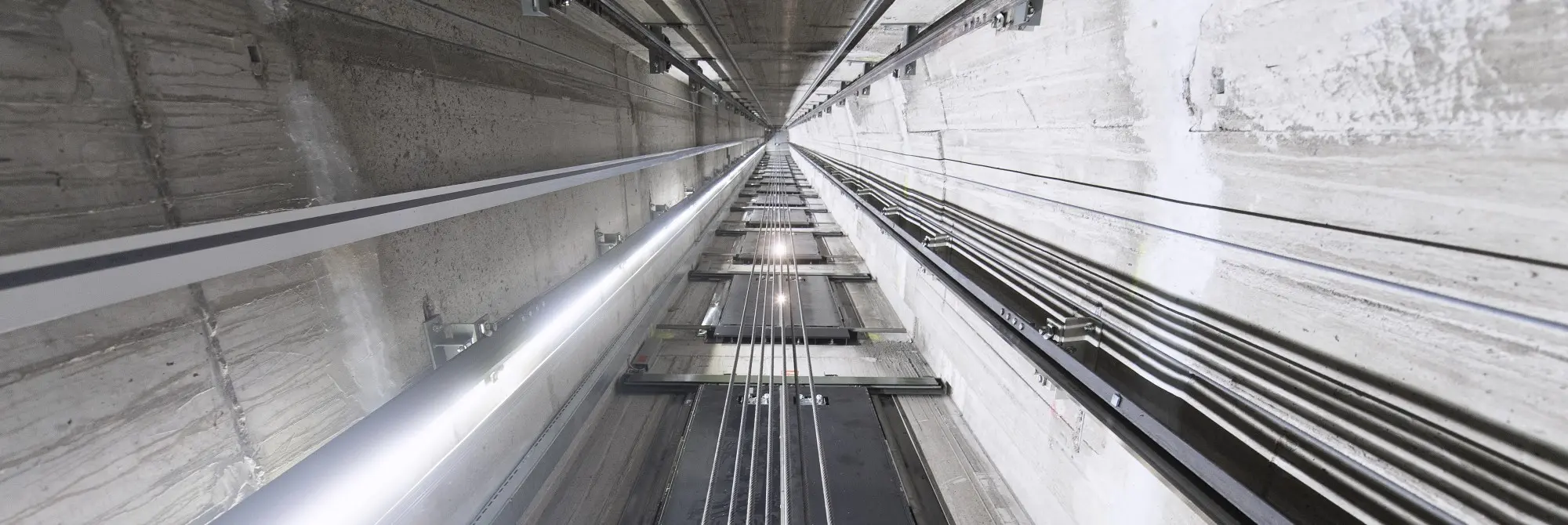The emergency brake ensures that, even in the rare possibility that all other safety precautions fail, the elevator cab will never fall down the hoistway. The emergency brake functions by using a mechanical safety mechanism located underneath the elevator cab that wedges itself onto the rail when overspeed is detected.
If an elevator cab begins to speed up or down the hoistway too quickly, the brake engages and securely brings the cab to a halt.
Other styles of emergency brakes are also available, such as sheave brakes and secondary disc brakes along with rope grippers. Similar safeties are installed on the counterweights as well. Escalators also have a similar physical emergency brake called a pawl brake that lodges itself in the main drive sprocket if the drive chain should happen to fail.

History of the Elevator Emergency Brake
In 1854, a revolutionary invention saw the light of day at the Exhibition of the Industry of All Nations held in New York City. This invention changed the course of history: the emergency brake for elevators. They called the invention the “safety elevator.”
The inventor stood on top of the elevator and then had the ropes cut, showing that —because of the innovative safety mechanism — the platform would not fall to the ground. The “safety,” for short, was applauded by all who watched the demonstration at the World’s Fair Expo back in the 1800s.
Before the debut of this invention, elevators were mainly seen as a tourist attraction or a means to carry large loads of materials. They were not viewed as a safe transportation method. The emergency brake changed this perception for the better.
 United States
United States


